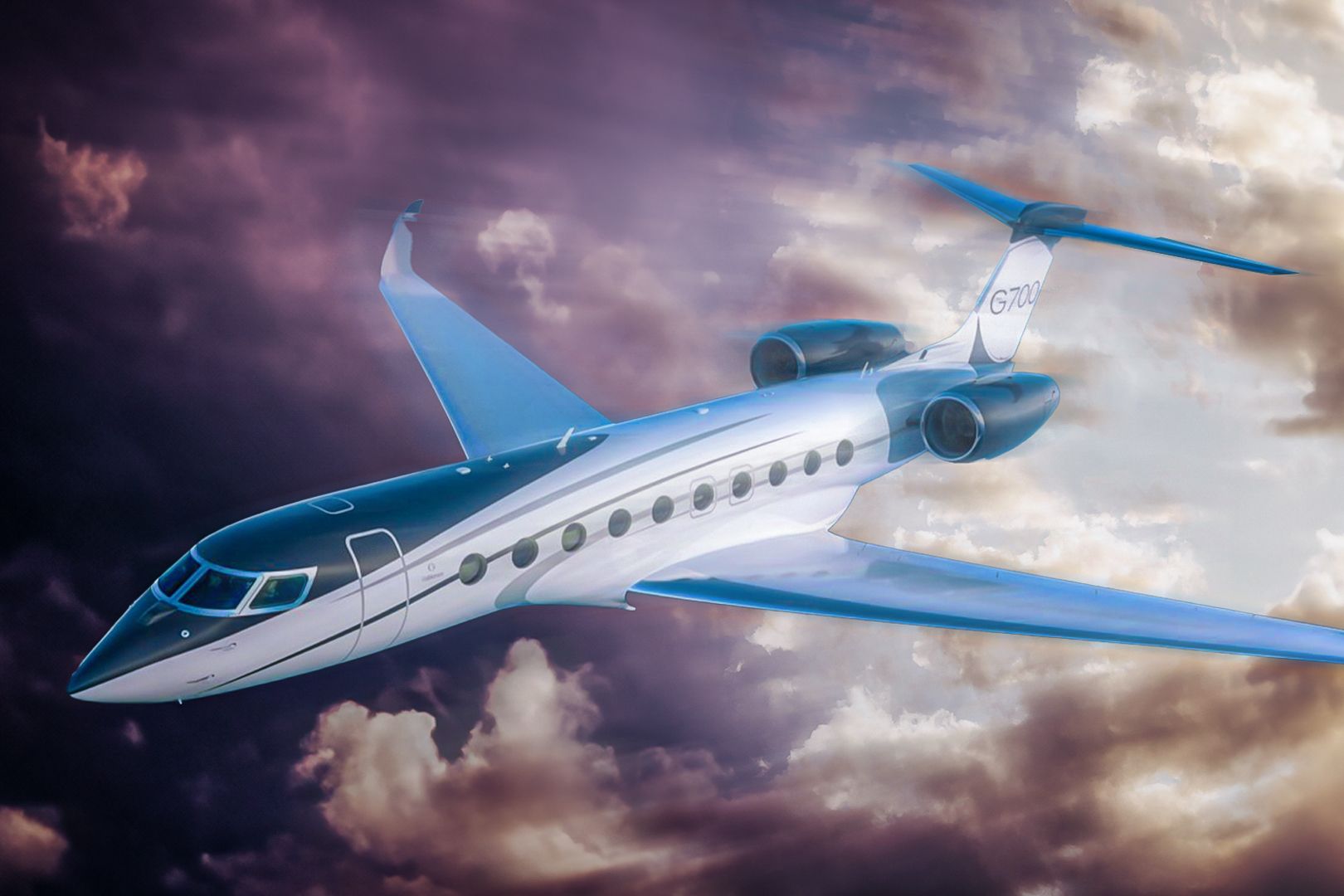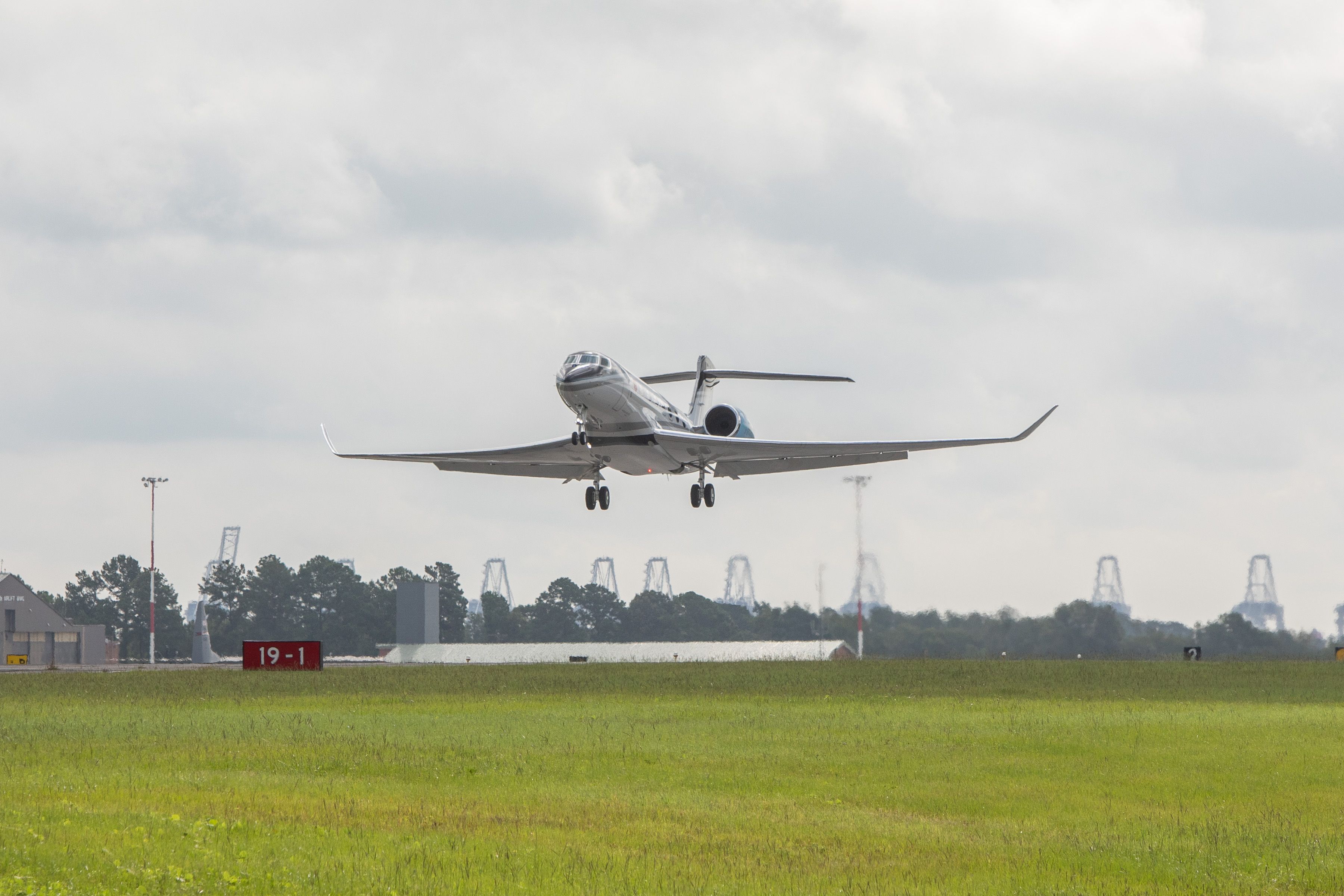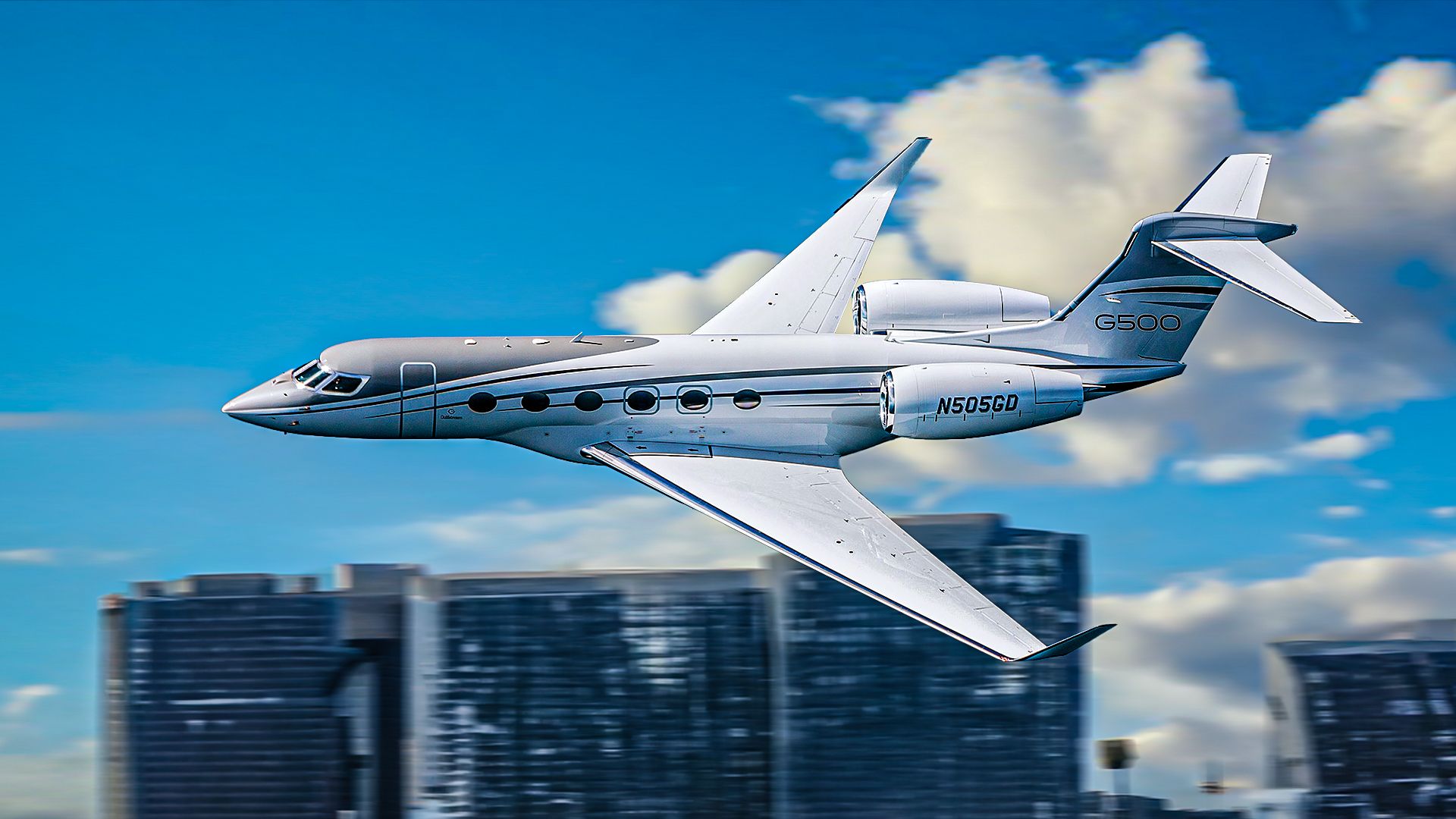Summary
- G500 goes fast: Cruises at Mach 0.90, slows to 0.85 for range
- Sidestick controls: Fly-by-wire tech with force feedback
- New wings: Supercritical for speed and control
The Gulfstream G500 is a twin-engine super-midsize business jet with rear-fuselage mounted engines, supercritical wings, and a t-tail. The aircraft is a clean-sheet build, meaning it was designed from scratch.
The G500 was introduced in October 2014 and had its maiden flight in May 2015, six months later. The aircraft was certified two years later, in 2017.
Speed was the main focus of the G500 and G600. They cruise at Mach 0.90 and only slow down to Mach 0.85 to stretch the range to its maximum. Very few other business aircraft can comfortably keep up with it.
However, that doesn’t mean the aircraft is a one-trick pony. Here are five unique features of the Gulfstream G500.
5
Sidestick Controls
A first for Gulfstream
The G500 and its slightly longer twin, the G600, are the first aircraft in the Gulfstream lineup to feature fly-by-wire active digital sidestick controls instead of a traditional yoke. The Gulfstream was hesitant to make the change that many other manufacturers embraced until BAE Systems adapted technology originally developed for fighter aircraft for civil use.
The new control feature has active force feedback, which emulates the stick feel of mechanically linked controls. It gives pilots the “classic” control feel, which allows them to fine-tune their control inputs and fly the aircraft how they want to versus the computer.
Thales, Parker Aerospace, and Moog provide other technologies for the fly-by-wire system.
4
Updated flight deck
Harmony courtesy of Symmetry
The G500 features a new Symmetry Flight Deck based on the Honeywell Primus Epic avionics suite. It is the first aircraft to feature the Primus Epic. According to Flying Mag, the cockpit will be unrecognizable to seasoned Gulfstream pilots. The new flight deck has removed nearly 70% of all mechanical switches, knobs, and push buttons in favor of 10 high-definition touchscreen liquid crystal displays (LCDs).
The two screens are on either side of the throttle quadrant and are used for communications and flight planning. The four screens in between are configured to act as the primary flight display (PFD) and multi-function flight display (MFD) for each pilot. However, they are completely customizable and can be configured however the pilots wish. Three overhead screens replace most of the buttons. The final screen is set near the jumpseat position and can be used as a backup in the unlikely scenario that all the screens fail. Another two electronic flight bags are also integrated into the system.
This suite includes Honeywell’s Next Generation Flight Management Systems (NGFMS) and SmartView Synthetic Vision. These systems help maintain a pilot’s situational awareness while reducing workload.
Another added benefit of using touchscreens is that Gulfstream can update everything through a simple over-the-air software update.

Related
Why Is Gulfstream Such A Popular Private Jet Manufacturer?
One of the most iconic aircraft manufacturers, the aircraft are immediately identifiable.
3
New wings
Faster and more controllable.
The G500 features brand-new supercritical swept wings based on the wings of the G650. The new blended-camber shape reduces high-speed drag while simultaneously increasing low-speed performance. It allows the G500 to cruise comfortably at high speeds and be controllable during approaches and landings.
The wings have the same sweep angle as the G600, 36 degrees, but feature a new flap design that extends to 80% of the trailing edge instead of 60% on the G650. The flight controls have also changed. The ailerons are now smaller and mounted towards the edge of the wings to give the aircraft better roll performance.
2
Composite build
Lighter and more efficient.
The G500 features more composite materials in its construction than any Gulfstream aircraft before. The brand-new tail and flight controls are made from composite materials, while the main airframe is built of metal alloys.
1
Pratt & Whitney power
New engines to power a new aircraft.
Two Pratt & Whitney Canada PW814GA turbofan engines power the G500. They propel the aircraft to a maximum speed of Mach 0.925 and can manage a range of 5,200 NM at Mach 0.85 and 4,400 NM at Mach 0.90.
Each engine produces 15,144 lb (67.36 kN) of thrust, easily allowing this super-midsize business jet to take off from hot and high airports.

Related
Top 5 Gulfstream Aircraft With The Longest Range
Most of these aircraft compete directly with the Bombardier Global series.
G500 Specifications
The G500’s specifications, according to Gulfstream, are presented in the table below.
| Exterior Dimensions | |
| Height | 25 ft 6 in (7.77 m) |
| Length | 91 ft 2 in (27.79 m) |
| Wing Span | 86 ft 4 in (26.31 m) |
| Cabin Dimensions | |
| Cabin Height | 6 ft 2 in (1.88 m) |
| Cabin Width | 7 ft 7 in (2.31 m) |
| Cabin Length (excluding baggage) | 41 ft 6 in (12.65 m) |
| Total Cabin Length | 47 ft 7 in (14.50 m) |
| Cabin Volume | 1,715 cu ft (48.56 m3) |
| Baggage Volume | 175 cu ft (5.0 m3) |
| Weights | |
| Maximum Takeoff Weight | 79,600 lb (36,106 kg) |
| Basic Operating Weight (including three crew) | 46,850 lb (21,250 kg) |
| Maximum Landing Weight | 64,350 lb (29,189 kg) |
| Maximum Zero Fuel Weight | 52,100 lb (23,632 kg) |
| Maximum Payload | 5,250 lb (2,380 kg) |
| Maximum Payload with Full Fuel | 2,900 lb (1,315 kg) |
| Maximum Fuel | 30,250 lb (13,721 kg) |
| Performance | |
| Range (4 pax, one crew, NBAA IFR reserves) | 5,300 NM (9,816 km / 6,099 mi) |
| Maximum Operating Mach Number | Mach 0.925 |
| High-Speed Cruise | Mach 0.90 |
| Long Range Cruise Speed | Mach 0.85 |
| Initial Cruise Altitude | 43,000 ft (13,106 m) |
| Maximum Certified Altitude | 51,000 ft (15,545 m) |
| Takeoff Distance (MTOW, SL, ISA) | 5,300 ft (1,615 m) |
| Thrust per engine | 15,144 lb (67.36 kN) |
| Occupancy | |
| Crew | 2 |
| Passengers | 10-13 |
| Systems | |
| Engine | Two Pratt & Whitney PW814GA |
| Avionics | Gulfstream Symmetry Flight Deck™ |

